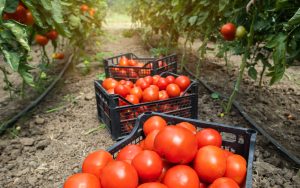This week Australia held a conference on ending modern slavery. The conference was designed to identify mechanisms that can build both cross-border and cross-sector collaboration to negate the different forms of modern slavery, as well as deal with its effects. It was a reflection of how serious the Australian government views this issue that both the minister of foreign affairs, Penny Wong, and the attorney-general, Mark Dreyfus, both spoke at the event.
Modern slavery has become an umbrella term that includes various forms of compelled labor. This can include sex trafficking, bonded labor or debt bondage, forced child labor, and domestic servitude. These compelled forms of labor are not isolated to certain countries, and are not divorced from the products we consume on a daily basis. As Wong noted, modern slavery “is widespread and insidious. It is woven into our supply chains and our economy, exacerbated by disparities of power and opportunity in our global economy.”
The complexity of modern supply chains means that it is incredibly difficult for consumers to know whether the products they buy are produced through modern slavery. As New South Wales Anti-Slavery Commissioner Dr. James Cockayne wrote in Australian Outlook in December last year: “Check a jar of tomato paste in the supermarket and it probably says, ‘Product of Italy.’ But in reality, a large share of those ‘Products of Italy’ are in fact simply diluted from concentrates produced in Xinjiang, China. A place where there is now significant evidence of modern slavery.”
Current product labeling regulations don’t provide the full picture of where, but also how, the items we consume are produced. Those of us who may wish to be more diligent and ethical in the way we shop face an extraordinarily difficult task in obtaining accurate information.
In recent weeks the Walk Free Foundation, an international human rights group focused on the eradication of modern slavery, released its Global Slavery Index 2023. In the index the organization found that currently there are an estimated 49.6 million people worldwide trapped in modern slavery. India and China dominate the raw numbers, with 11 million and 5.8 million people in these forms of servitude, respectively. However, in terms of prevalence rate – the number of modern slaves per 1,000 people – North Korea, Eritrea, Mauritania, and Saudi Arabia were deemed the worst offenders.
In Australia, it was estimated that just over 40,000 people were currently in conditions deemed to amount to modern slavery. This ranked Australia 147th out of the 160 countries surveyed, but for those 40,000 people the situation remains dire. In terms of Walk Free’s assessment of government responses to modern slavery, Australia ranked 2nd behind the United Kingdom. This reflects well on the Australian government, although its score based on 42 indices was still only 67 out of 100, indicating both Australia and the world at large have considerable work to do to end this scourge.
In May, the attorney-general’s department released a review of Australia’s Modern Slavery Act (2018), which provided an additional 30 recommendations to improve the way Australia addresses modern slavery both within Australia and outside of it. The focus of these recommendations was on companies doing their due diligence about their own supply chains, reducing the reporting threshold from revenues of $66 million to $33 million, greater scrutiny of company activity and tougher penalties for lack of compliance.
If implemented, these recommendations may force Australian companies to understand their own supply chains better, and hopefully weed out instances of exploitation. However, in terms of modern slavery within Australia itself the most common forms are sexual exploitation and forced marriage. These can be abuses that hide in plain sight, and are protected by social norms and power relations that can be difficult for governments to address.
Sexual exploitation involves someone having to perform sex work due to being coerced, threatened or deceived. However, the lines around what constitutes consent can be incredibly murky and even a concept like informed consent has many shades of gray. This means that sexual exploitation is probably a far greater problem than is acknowledged.
These instances of negative power relations between individuals or groups can often be compounded by other external forces. As Wong highlighted in her speech: “Conditions including political instability, conflict, pandemics and famine – all worsened by climate change – help modern slavery thrive. These conditions exacerbate existing inequalities and condemn people, including children, to inhumane conditions. The creep of authoritarianism is also a factor. We know that some countries use forced labor as a tool of oppression.”
It is positive that the Australian government has a keen understanding of these issues and has demonstrated a strong commitment to addressing them. As a transnational problem Australia’s cooperation with ASEAN countries to address human trafficking is another vital initiative. Yet at its core modern slavery thrives on how to treat each other as individuals, which means long-standing solutions may only come when we collectively reject a desire to dominate others.

































